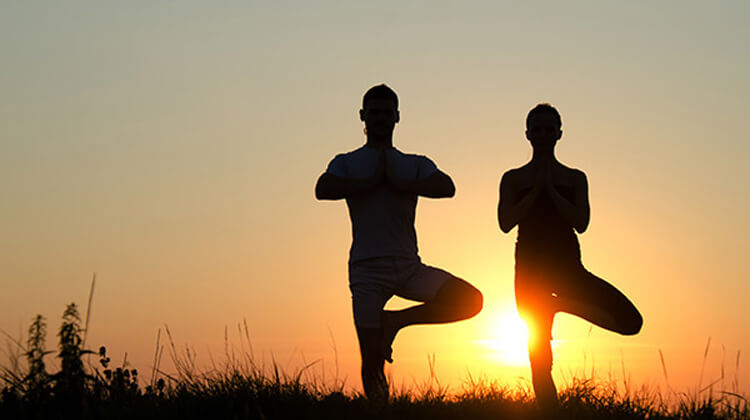Find your balance
Balance is important for many everyday activities – walking, climbing stairs, gardening, dancing or simply getting up from a chair. It can help you stay active and prevent falls and injuries.1 Balance is a skill that can be improved with practice. So, whether you feel confident or clumsy when it comes to balance, there’s always room for improvement. Try adding a few simple exercises for better balance to your day.
-
- Heel-to-toe walking. Find a spot where you can walk approximately 20 steps without interruption (a hallway or large open room works well). Focus on a spot in front of you and walk 20 steps in a straight line with the heel of your foot touching the toe of your other foot with each step.
- Water exercise. Working out in water allows freedom of movement without the risk of falling, so it’s good if you have problems with balance or joint pain. Start simple by walking in waist-deep water. Try walking forward, backward and sideways to tone different muscle groups.
- Tai chi. This ancient exercise is a form of martial arts that uses slow, flowing movements to help with relaxation and coordination. Get started with videos or apps that walk through basic tai chi moves. Or, join a tai chi class at your local gym or community center.
- Fitness ball exercises. A fitness ball (also called a stability or exercise ball) is a large ball you can use to build strength, flexibility and balance. Consider starting with some basic exercises. For example, hold the ball in front of you and slowly bend your legs to do a squat. Rotate your trunk to the right and left, holding the position briefly on each side. Then return to a standing position. Check with your local fitness center for more ways to exercise with a fitness ball.
- Standing on one foot. Start by holding on to a sturdy chair. Stand on one foot and hold the position for 10 seconds. Repeat 10 times with each leg. Once you are confident, try letting go of the chair, but remain near it in case it is needed. To add more challenge, do this with your eyes closed.
Always consult your doctor or speak with the healthcare provider in the National Life Health and Wellness Center before beginning any exercise program. Your doctor may suggest exercises that are more specific to your needs and limitations.
Source: 1. National Institute on Aging at NIH. “Improve Your Balance.” https://go4life.nia.nih.gov/exercises/balance (accessed September 11, 2017)
This is intended to be general health information and not medical advice or services. You should consult your doctor for medical advice or services, including seeking advice before undertaking a new diet or exercise program.

